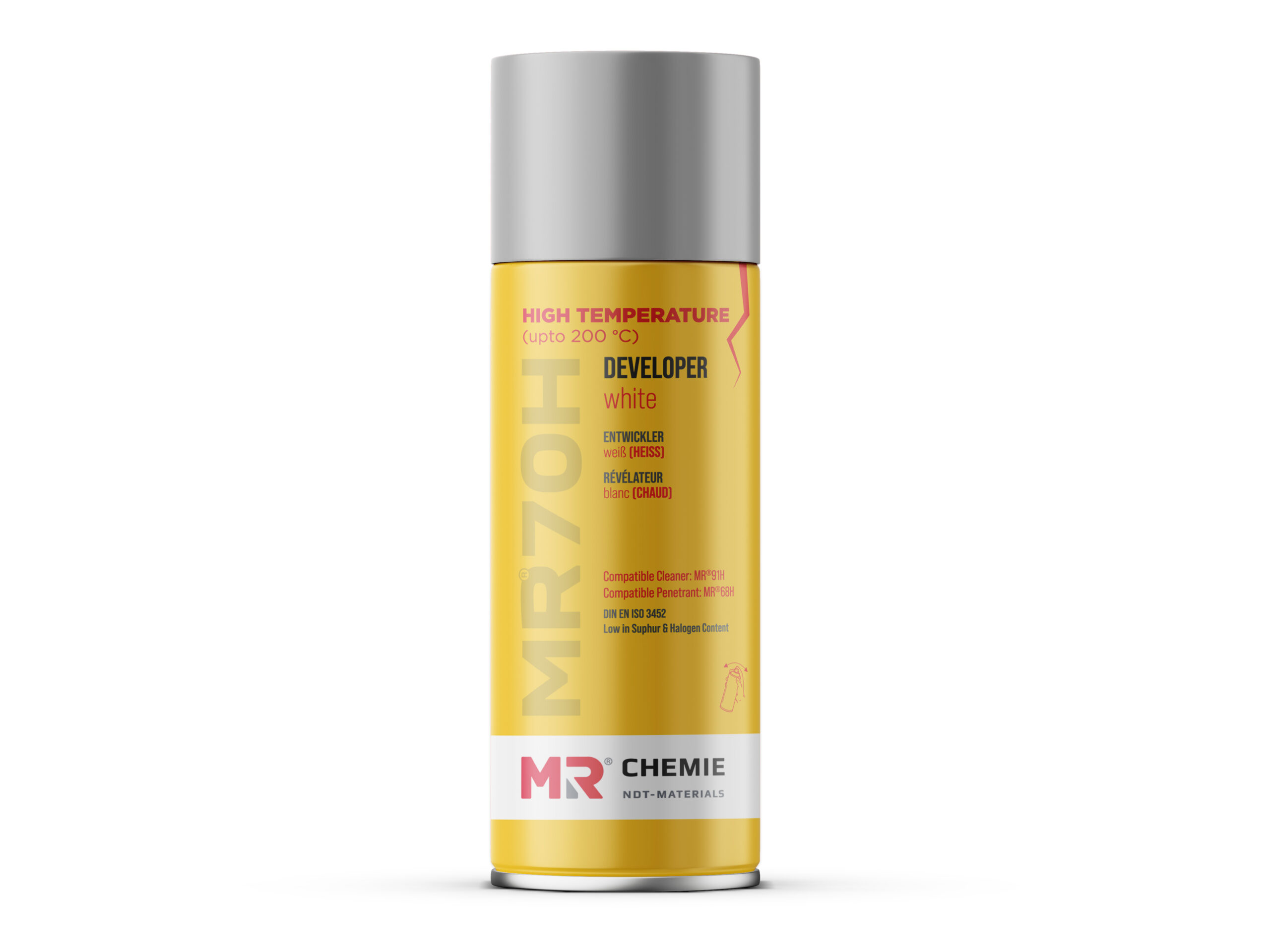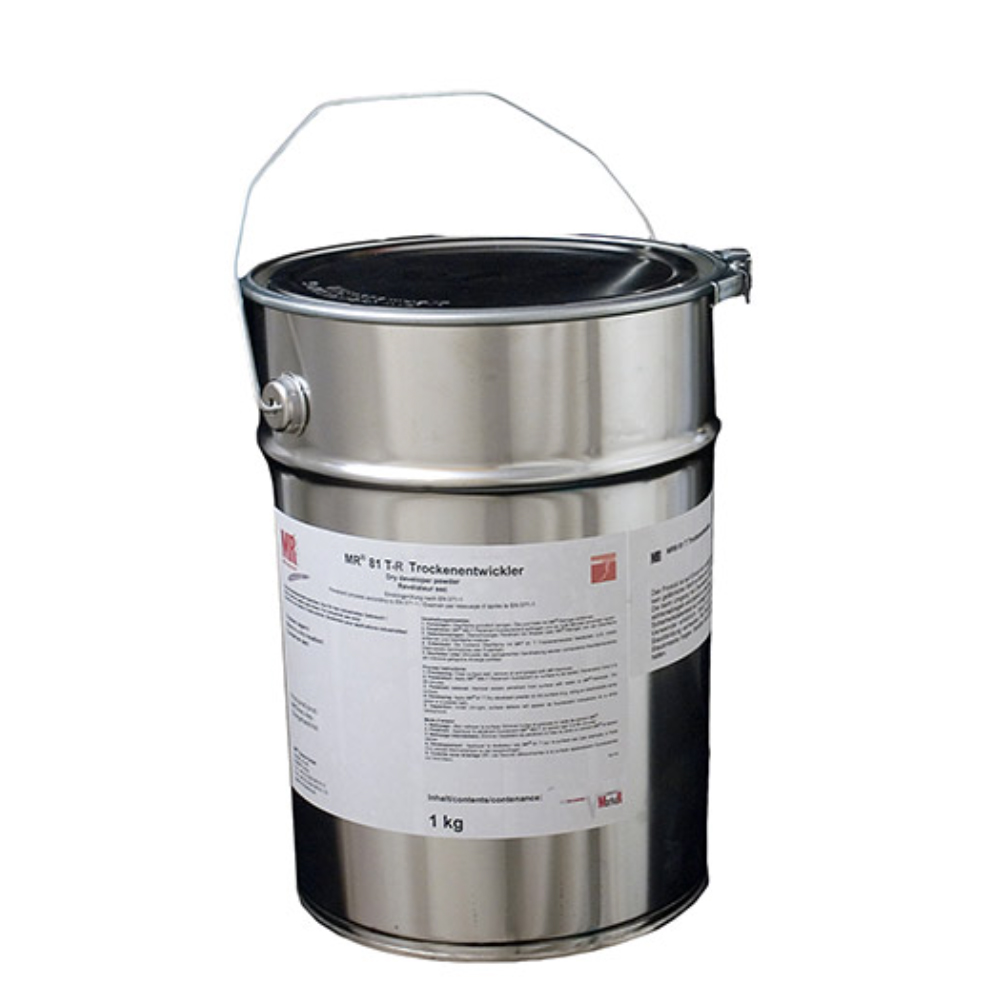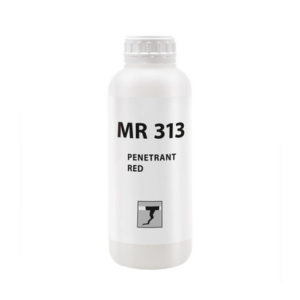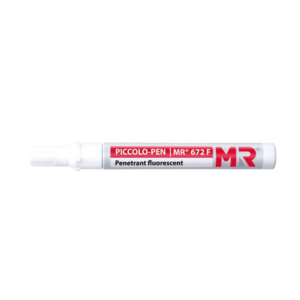MR®81T-R, Dry Developer Powder
MR®81T-R is a non-combustible, light, free flowing dry developer powder that is ideal for highly sensitive fluorescent penetrant processes which can be applied to oven-dried parts following the use of penetrants and forms a thin film on parts that enhances the visibility of ultra-fine discontinuities.
| SKU | Pack Size | Case Size |
| 2511-0028 | Bulk 1kg | – |
Additional information
| Properties | Appearance – free flowing white powder |
|---|---|
| Approvals | QPL SAE AMS 2644 |
| Family Testing | Penetrant – all Type I penetrants |
| Recommended Usage | NDT Method – Dye Penetrant Testing |
| Reference Test Blocks | Reference test block type 1 (Ni-Cr panel – 10µm, 20µm, 30µm & 50µm) |
Features
- Even, thin developer coverage
- Enhances visibility of ultra fine discontinuities.
- Instant indications - high absorption effect
- Non combustible powder
- Easy to apply and easy to clean
- Free flowing powder
- Shows clear indications
- Non toxic
- Suitable for all metals (suitability for plastics & ceramics requires testing prior to use)
How it Works
In non-destructive testing (NDT), a developer is a material that is used to enhance the visibility of surface-breaking defects or discontinuities. The developer is typically applied after a penetrant material has been applied to the surface of the material being inspected. The penetrant material will enter any surface-breaking defects or discontinuities (capillary action) and remain in the surface-breaking defects or discontinuities after the excess penetrant has been removed. The developer is then applied to the surface of the material, and it works by drawing the penetrant material out of any discontinuities or defects on the surface (reverse capillary mechanism). The developer forms a coating on the surface of the material, and it absorbs the penetrant material, which causes it to migrate to the surface and form a visible indication.GHS
Bulk Non Hazardous
FAQ
Q: What is dry developer powder in NDT?
A: Dry developer powder is a type of non-destructive testing (NDT) material used to develop latent defects on the surface of materials during the inspection process. Dry developer powder is typically made of a light-colored, finely ground powder, such as talc or chalk.
Q: How is dry developer powder used in NDT?
A: Dry developer powder is used to create a contrasting background for the detection of surface defects. The powder is applied to the surface of the material being inspected and is then allowed to settle into any cracks or voids. After a waiting period, the surface is inspected for visible indications of defects. It may be applied by dusting, spraying, or dipping. Dipping is the least preferred method of application as some indication scrubbing can result and developer can become contaminated quickly with penetrant. Electrostatic spray application is possible, but care is required to prevent excessive developer build-up which will mask indications. For best results, allow a minimum of ten minutes for developing time before inspecting.
Q: What are the advantages of using dry developer powder in NDT?
A: The use of dry developer powder offers several advantages in NDT. It is an easy-to-use material that can be applied quickly and efficiently, and is ideal for very high sensitive fluorescent penetrant processes. Dry developer powder is also cost-effective, and can be used on a wide range of materials, including metals, ceramics, and plastics.
Q: What are the limitations of using dry developer powder in NDT?
A: While dry developer powder is a useful material for NDT, it does have some limitations. For example, it may not be suitable for use on certain surfaces, such as rough or porous materials. Additionally, it may not provide adequate contrast in brightly lit environments for visible inspection.
Q: What safety precautions should be taken when using dry developer powder in NDT?
A: Dry developer powder should be used in a well-ventilated area, and workers should wear protective gear, such as gloves and a mask, to prevent inhalation of the powder. The powder should be stored in a dry, cool place, and workers should avoid contact with the eyes and skin. Any spills should be cleaned up promptly to prevent slips and fall.






